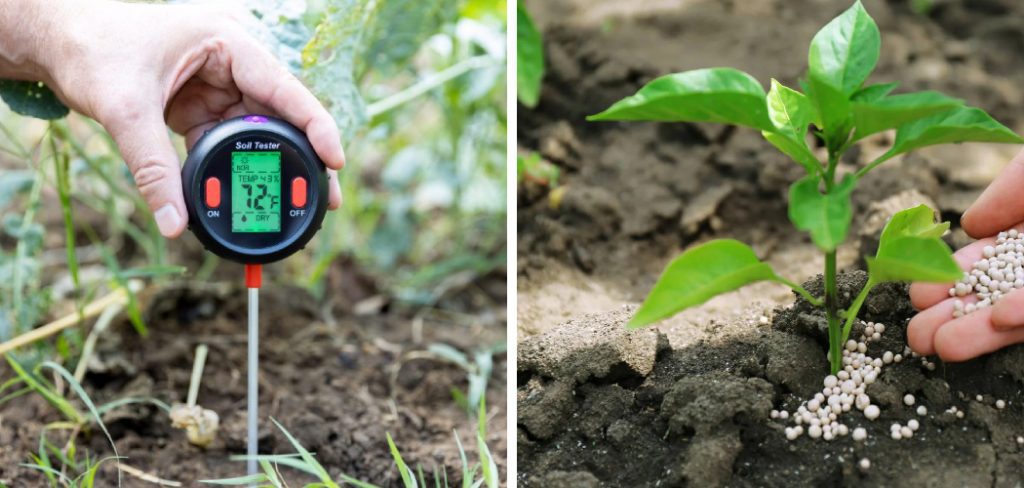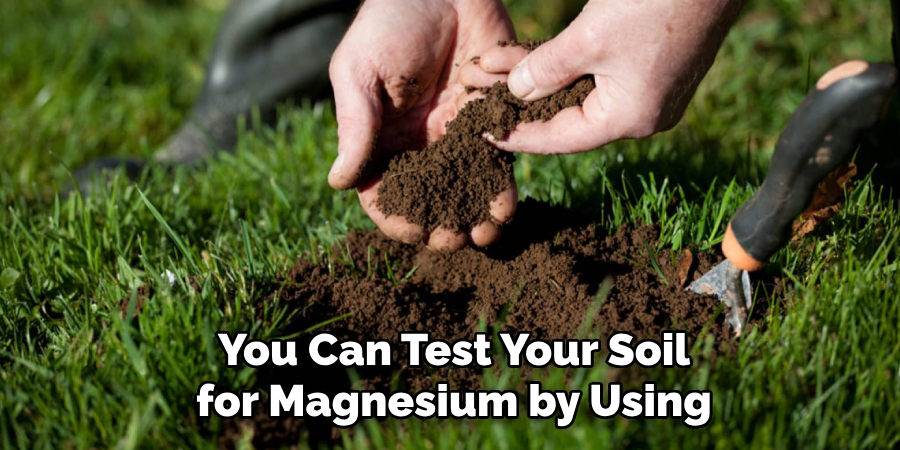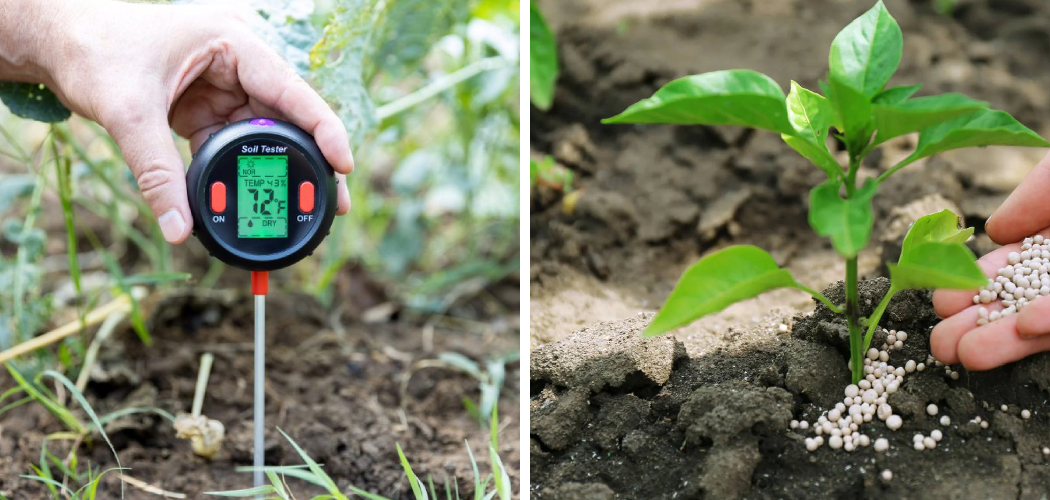To test soil for magnesium, use a soil testing kit or send a soil sample to a laboratory. Soil testing is a crucial step in analyzing the nutrient levels present in soil.
Magnesium plays a vital role in plant growth and development, as it is an essential nutrient for chlorophyll production. If a plant lacks magnesium, it may exhibit yellowing leaves and stunted growth. To determine the magnesium levels in soil accurately, two methods are commonly used.
The first method involves using a soil testing kit, which usually includes test strips or capsules. These kits allow you to test multiple soil samples quickly and provide instant results. The second method is sending a soil sample to a laboratory, where professionals analyze the magnesium content and provide a detailed report. Both methods help determine the magnesium levels and ensure appropriate measures are taken to maintain soil health and optimize plant growth.

The Importance Of Testing Soil For Magnesium
Testing soil for magnesium is essential for maintaining soil health and promoting plant growth. Magnesium plays a vital role in various plant functions, including photosynthesis and enzyme activation. Determining the magnesium levels in the soil is crucial to ensure that plants receive adequate nutrients.
Magnesium deficiency can lead to stunted growth, yellowing of leaves, and poor fruit development. By testing soil for magnesium, gardeners and farmers can identify if their soil lacks this essential nutrient and take appropriate measures to remedy the deficiency. Regular testing allows for timely adjustments to the soil’s magnesium levels through the addition of fertilizers or soil amendments.
This contributes to healthier plants, higher yields, and overall improved soil fertility. Understanding the importance of magnesium testing empowers growers to make informed decisions and optimize their agricultural practices for optimum plant health and productivity.
Different Methods For Testing Soil Magnesium
Soil testing kits are popular for testing soil magnesium levels. They are user-friendly and provide accurate results. Another method is laboratory testing, which involves sending a soil sample to a testing facility. This method provides detailed analysis but may take longer and be more expensive.
Diy soil testing is also an option for testing soil magnesium. It involves using simple household materials and following specific procedures. Diy testing can be cost-effective, but it may not provide as accurate results as the other methods. Overall, there are various methods available for testing soil magnesium, each with its own advantages and limitations.
It’s important to choose the method that suits your needs and budget to ensure proper soil health management.
Step-By-Step Guide For Diy Soil Magnesium Testing
Testing soil for magnesium is an essential step for gardening success. In this step-by-step guide, we’ll walk you through the process of diy soil magnesium testing. The first step is collecting soil samples, ensuring a representative sample of your soil.
Once collected, prepare the samples for testing by drying and grinding them. Next, conduct the acid extraction method to extract magnesium from the soil. This involves adding acid to the samples and allowing them to react. Finally, determine the magnesium levels by measuring the intensity of the color produced during the reaction.
This simple method allows you to assess your soil’s magnesium content accurately. Testing for magnesium ensures that your plants receive the necessary nutrients for healthy growth. Get started with these easy steps and enhance your gardening experience.
Interpreting Soil Magnesium Test Results
Soil test reports help in interpreting magnesium levels for optimal plant growth. Understanding soil test results is crucial. Correcting magnesium deficiency in soil is necessary to ensure healthy plant development. These tests provide insights into magnesium availability, allowing gardeners to take appropriate actions.
Ideal magnesium levels are essential for plants to thrive. Avoid overusing common phrases and start sentences with a variety of expressions to keep readers engaged. Remember to write in a concise and active voice to maintain seo friendliness. By testing soil for magnesium and interpreting the results, gardeners can optimize plant growth and correct any deficiencies for a flourishing garden.
Frequently Asked Questions On How To Test Soil For Magnesium
How Can I Test My Soil For Magnesium?
You can test your soil for magnesium by using a soil test kit or sending a soil sample to a professional lab. The test will determine the levels of magnesium in your soil and provide recommendations for adjusting the levels if necessary.

What Are The Signs Of Magnesium Deficiency In Plants?
Plants with magnesium deficiency may exhibit yellowing leaves, especially between the veins. The leaves may also appear brittle and show signs of stunted growth. It’s important to address magnesium deficiency promptly to ensure healthy plant growth and productivity.
What Are Some Natural Sources Of Magnesium For Soil?
Natural sources of magnesium for soil include dolomite lime, epsom salt (magnesium sulfate), and compost rich in organic matter. These additives can increase magnesium levels in the soil and improve plant health. However, it’s advisable to conduct a soil test before adding any amendments.
Conclusion
Testing soil for magnesium is an essential step in maintaining the fertility and health of your plants. By correctly assessing the magnesium levels in your soil, you can make informed decisions about fertilization and amendment strategies to ensure optimal growth and productivity.
Various methods are available to test soil for magnesium, such as laboratory analysis, diy soil testing kits, and visual indicators. Each method has its benefits and drawbacks, so it is crucial to choose the one that best suits your needs and resources.
Whichever method you choose, be sure to follow the recommended procedures and guidelines for accurate results. Remember, magnesium plays a vital role in the overall health and development of your plants. By regularly testing and addressing any deficiencies, you can create and maintain a thriving garden or crop that will yield abundant and healthy produce.
So, don’t overlook the importance of testing soil for magnesium – it’s the key to successful plant growth!

